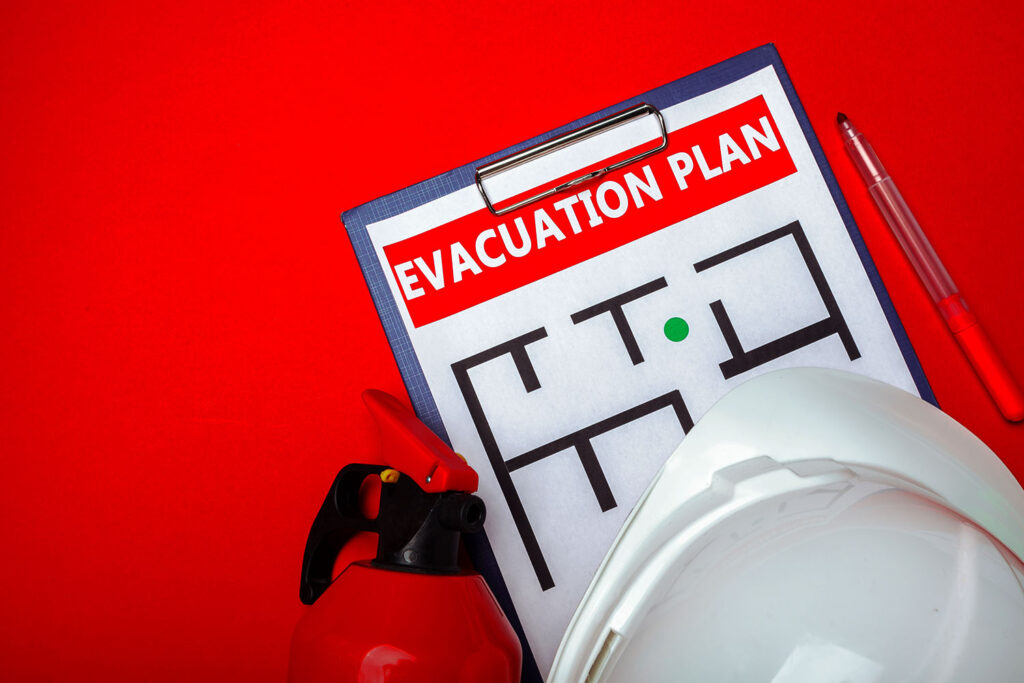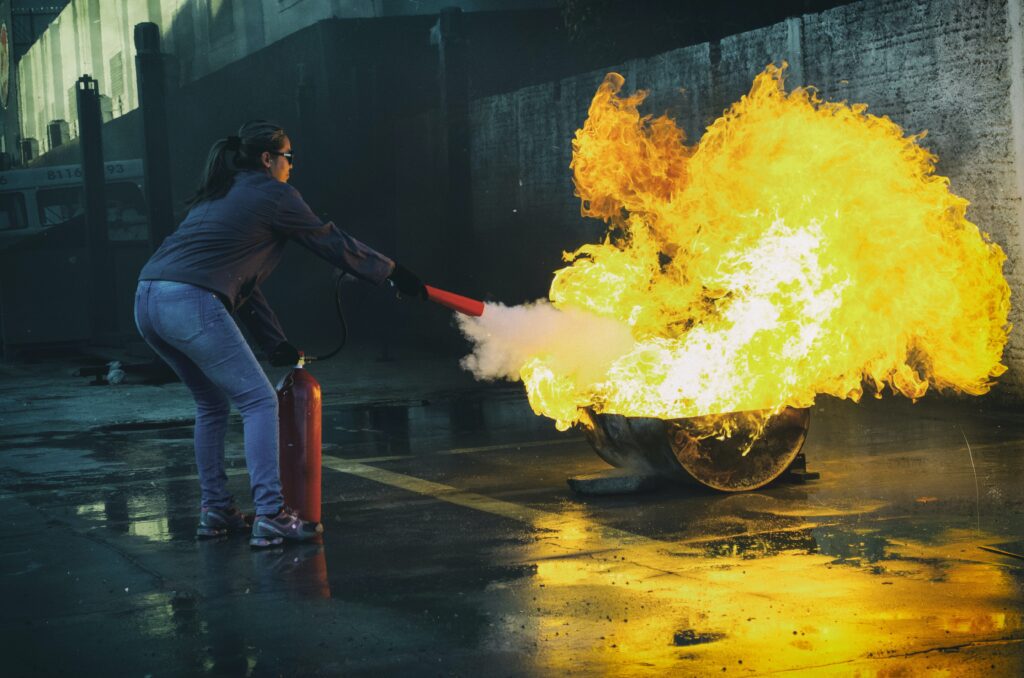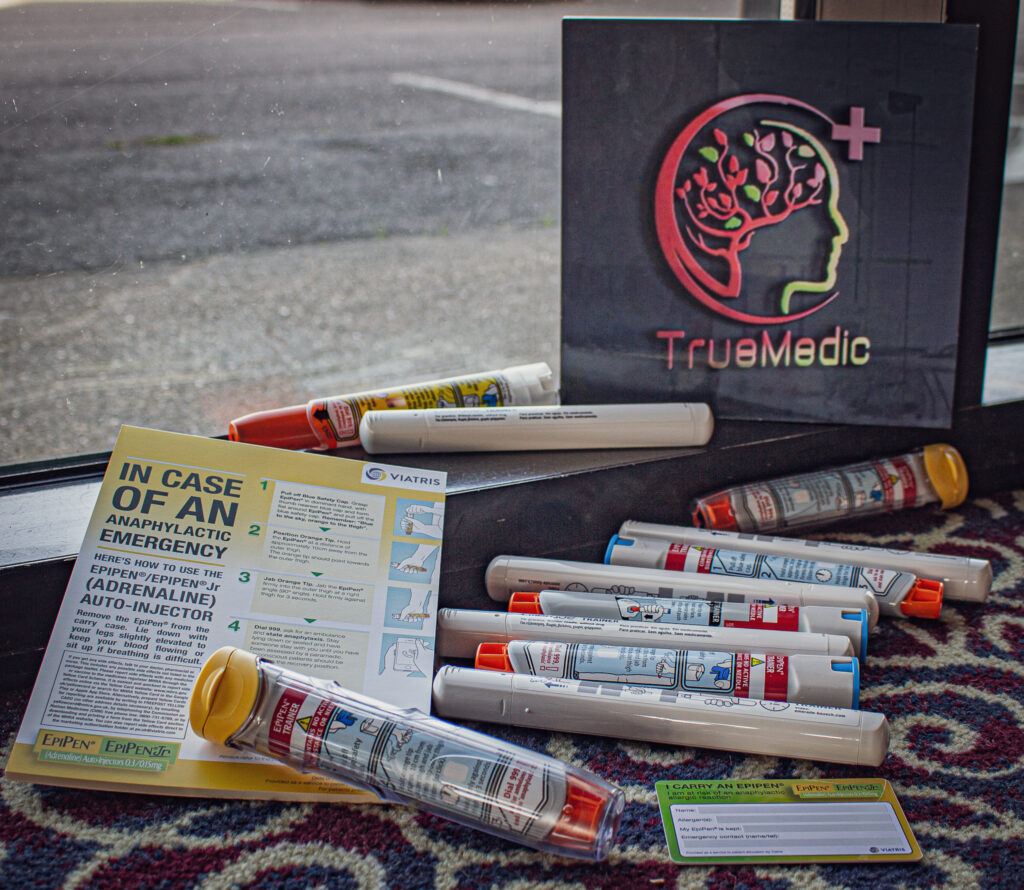Fire safety is a critical aspect of any business, yet many managers find the detailed requirements and regulations surrounding fire safety risk assessments overwhelming. By overlooking potentially hazardous issues, companies can be financially and physically at significant risk. Fortunately, trained assessors exist to help companies identify potential risks comprehensively and efficiently. Businesses can save time and money while protecting lives through their expertise.
But how is a fire risk assessment conducted? How can businesses prepare for one? Well, TrueMedic Ltd. aids the process, highlighting the critical steps and providing expert advice to ensure that all areas of your business are compliant. This blog post will give an in-depth look into the intricacies of fire safety risk assessment, offering guidance and advice for those who wish to ensure their premises are as safe as possible. So let’s get started.
Fire Safety Risk Assessment | A Basic Overview

Fire risk assessments are essential in safeguarding against fire hazards and establishing safety protocols. It is a collaborative effort between employees, site managers, and other safety officials. The ultimate goal is to develop effective fire protection strategies informed by the results of these evaluations.
By working together towards this common goal of providing maximum security for those at risk, we can create an ideal environment that prioritizes fire prevention and keeps everyone safe.
Fire safety risk assessment is a systematic process of identifying potential hazards and assessing the associated risks. It requires careful examination of buildings, structures, and other areas to determine risk areas.
Additionally, fire safety regulations must be studied to ensure all applicable local laws are adhered to. If any weaknesses are identified, swift action must be taken to eliminate these potential threats.
The Fire Safety Risk Assessment Process
Once a site has been assessed, the evaluation process can begin. The following steps outline how a practical risk assessment should be conducted: [2]
1. Identify The Hazards
The assessor must identify all potential fire hazards, including combustible materials, electrical wiring, and heating sources. Any areas of overcrowding or flammable items should also be noted.
2. Assess The Risks
It is then necessary to evaluate the associated risks to health and safety. This includes considering a range of factors such as emergency access routes, the location of fire extinguishers, possible ignition sources, and so on. The severity of each risk should be assessed, and proper precautions should be taken to minimize any potential danger.
3. Evaluate Fire Safety Measures

Once all hazards have been addressed, the assessor must evaluate existing fire safety measures to determine their adequacy. Fire drills should be practiced, and evacuation plans should be discussed with the relevant personnel to ensure all staff knows what to do in an emergency.
4. Record The Findings And Recommendations
The assessor must document the findings and provide recommendations for corrective action. This will include details of any areas that require improvement and a plan for implementing the necessary safety measures. Fire safety risk assessment reports must be kept on file and reviewed regularly so that all the necessary steps have been taken.
5. Arrange To Regularly Review The Risk Assessment
Finally, the fire safety risk assessment should be reviewed regularly. This is essential to ensure all fire safety measures remain current and compelling. Changes in building layout or staff numbers may necessitate a further evaluation of existing systems.
Following the steps outlined above, businesses can rest assured that they have taken all necessary precautions to protect their premises and staff members. Fire safety risk assessments are invaluable in preventing tragedy and should be taken seriously by all involved.
Benefits Of Fire Safety Risk Assessment
TrueMedic Ltd. takes fire safety seriously. Fire risk assessments are essential to any business and can make a massive difference in an emergency. Companies can ensure they have all the necessary precautions to protect their premises and staff members by properly assessing potential danger areas. Some of the significant benefits of a fire safety risk assessment are: [1]
-
Compliance With UK Regulations
The Regulatory Reform (Fire Safety) Order 2005 in the United Kingdom legally necessitates that all non-domestic premises have a fire risk assessment. Ignoring this responsibility can lead to significant repercussions, such as hefty fines or even imprisonment. Collaborating with an experienced assessor is essential to avoid potential punishments and ensure your business fulfils these regulations. [1]
-
Improved Fire Safety And Prevention
When you get a fire risk assessment, you can rest assured that the safety of your workplace will be enhanced. A proficient assessor will spot potential dangers and suggest solutions to mitigate them before they become an issue. With this strategy in place, you’ll have peace of mind knowing that your business is secure from harm caused by fires.
Businesses can reduce the risk of an unexpected fire and enhance workplace safety by recognizing and taking action on potential hazards, such as overloaded electrical sockets, impeded escape routes, or defective fire extinguishers.
-
Potential Cost Savings And Insurance Benefits
Businesses can benefit in multiple ways by undergoing a fire safety risk assessment. Not only will they identify potential hazards and address them before an emergency arises, decreasing property damage or downtime. They could also reduce insurance premiums as some providers see companies as lower-risk clients.
Ultimately, investing in this assessment may seem unnecessary at first glance; however, it can save money while ensuring your business runs smoothly for years.
Some Common Pitfalls In The Fire Safety Risk Assessment Process

Despite the many benefits that a fire safety risk assessment can bring, businesses must be aware of common pitfalls that arise when conducting these assessments. Some of these include: [3]
-
Failing To Consider All Risks
The assessor may fail to identify specific risks or dangers. This could lead to future hazardous situations and hefty fines if the company does not comply with UK regulations.
-
Unrealistic Solutions
The proposed solutions may be unrealistic for the business due to a lack of resources, funds, or available personnel. Assessors must provide viable solutions to ensure adequate fire safety measures are considered.
-
Implementation Issues
Once the assessment is complete, businesses must follow through on any proposed solutions. Otherwise, there will be no tangible benefits from the fire safety risk assessment process.
A fire safety risk assessment is invaluable for any business and should not be taken lightly. TrueMedic Ltd offers fire safety courses to help you understand these assessments and detailed advice on managing fire risks in the workplace. We’ve got your back in keeping your business safe and secure. Contact us to learn more about fire safety risk assessments and how you can stay compliant with UK regulations.
FAQs
1. What are risk assessment and prevention?
To recognize potential risks, a risk assessment is carried out to identify hazards and assess the consequences if they occur. Moreover, analysing the business impact (BIA) helps pinpoint any disruptions caused by time-sensitive or vital processes being hindered. There are many threats to consider when conducting these assessments.
2. Why do we need a fire risk assessment?
For the safety of a non-domestic building and its inhabitants, it is essential to conduct a fire risk assessment and create an effective fire safety policy. This process ensures that all possibilities are thoroughly examined to protect property effectively.
3. Who is responsible for fire risk assessment?
Whether it’s a single individual or a group responsible for one specific area, anyone in charge of any premises must implement Fire Risk Assessments. For example, this could be An employer, the owner, and the managing agent for the property.
4. Who can prepare a fire risk assessment?
The law does not explicitly designate who can conduct a fire risk assessment. It requires the individual to possess sufficient knowledge, experience, and competence to review that particular facility well.
References:
[1] https://www.gov.uk/workplace-fire-safety-your-responsibilities/fire-risk-assessments
[2] https://www.merton.gov.uk/system/files?file=fire_safety_risk_assessment_-_june_2013.pdf
[3] https://app.croneri.co.uk/topics/fire-safety-risk-assessment-and-prevention/indepth?topic=3419





